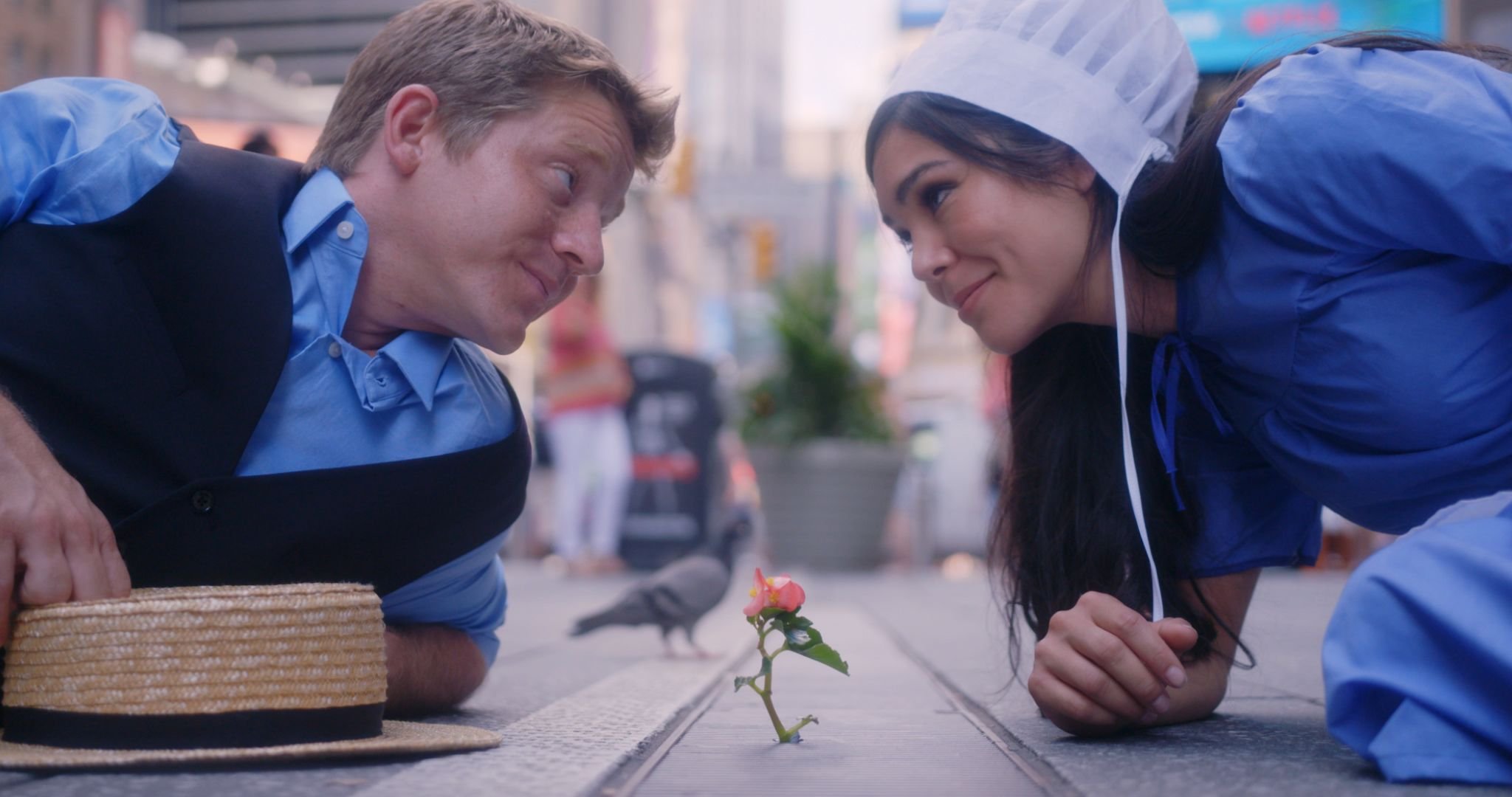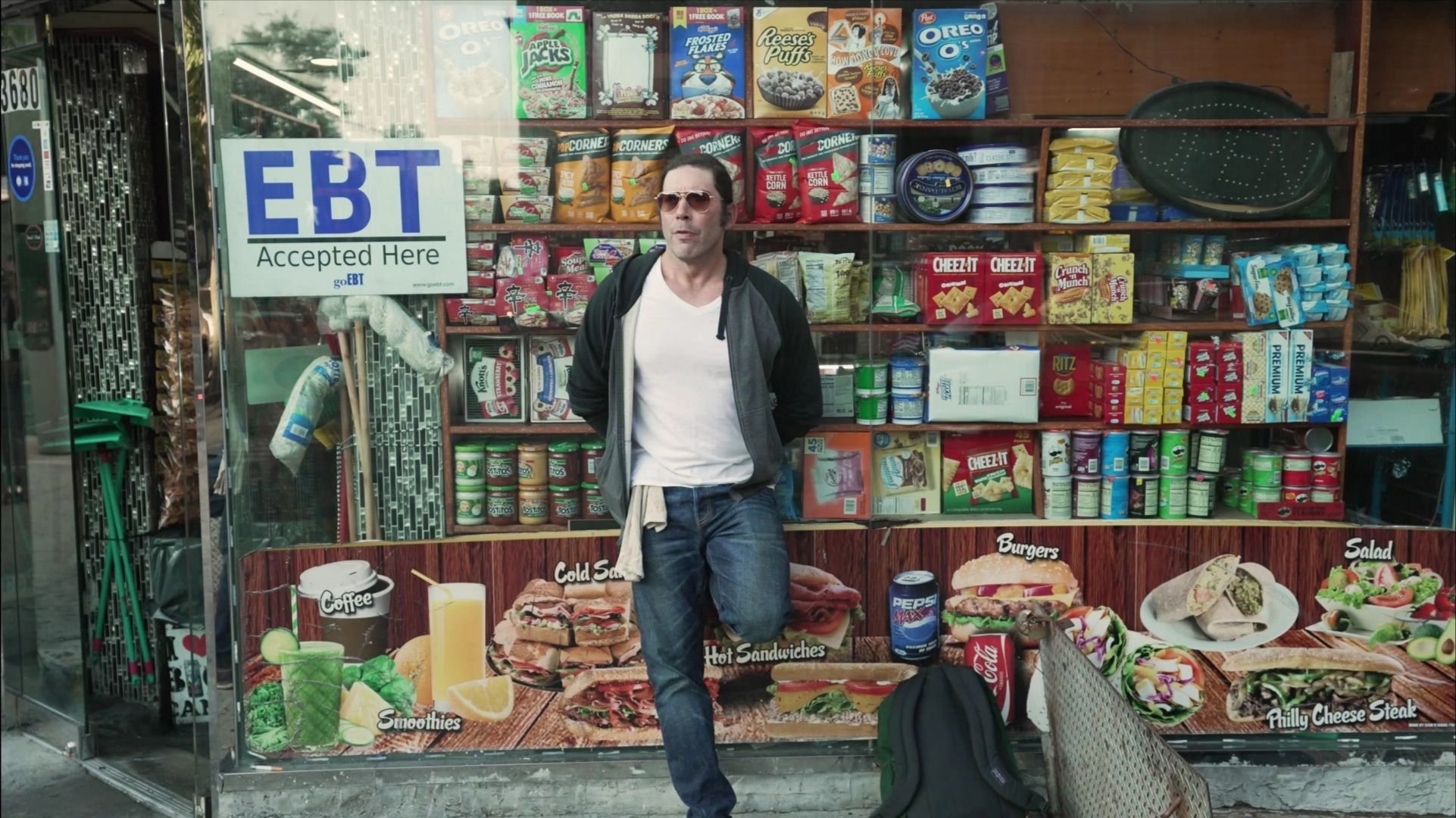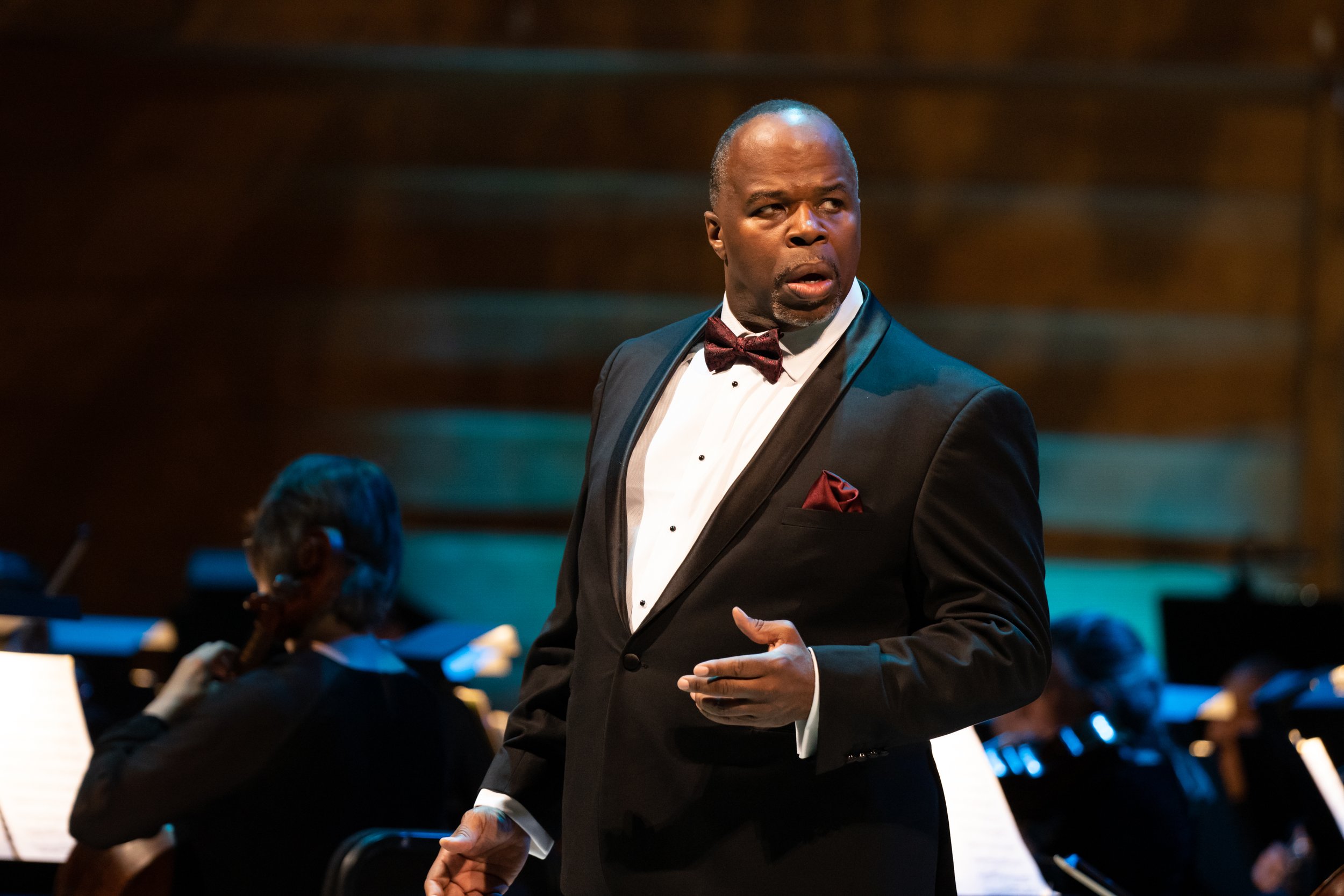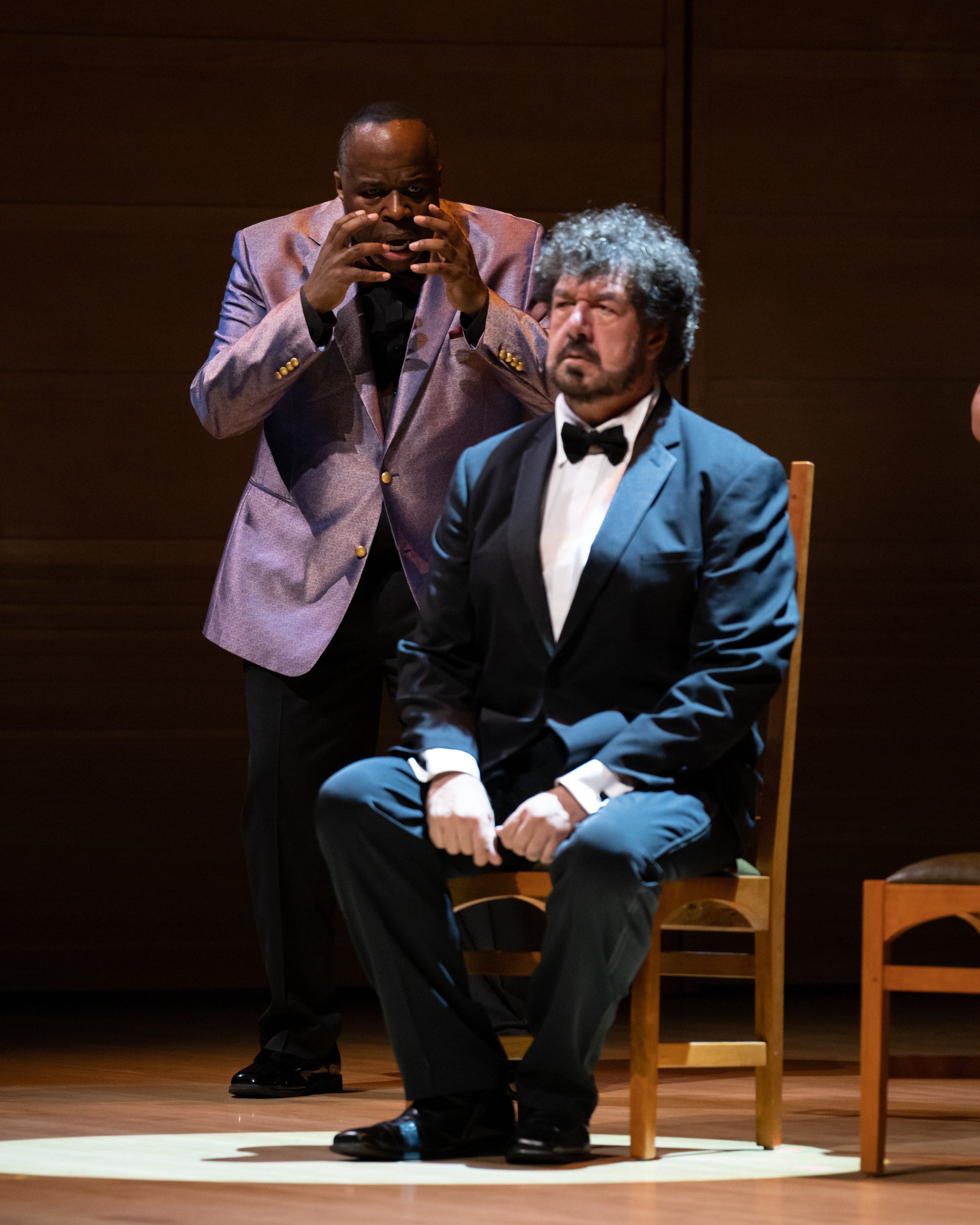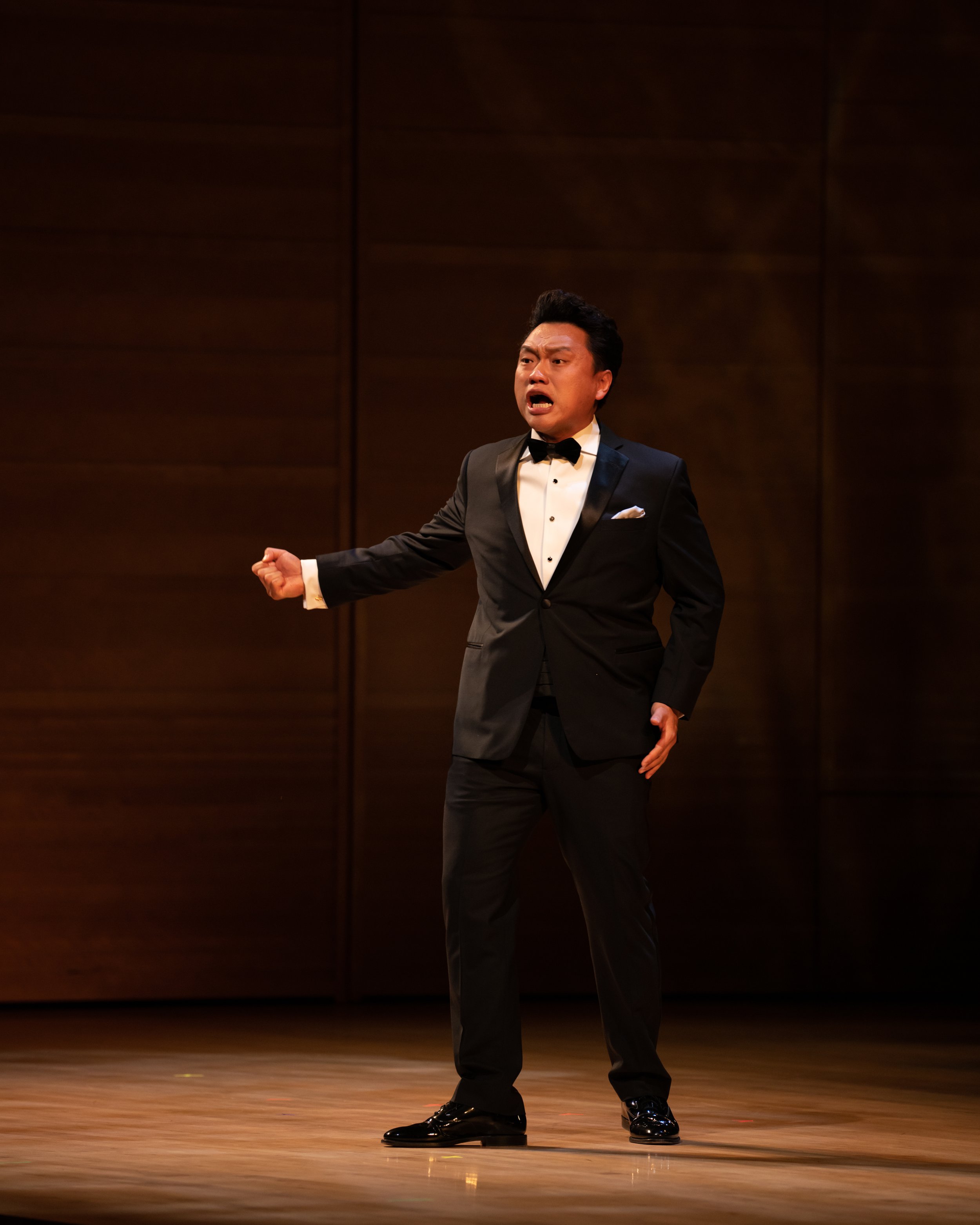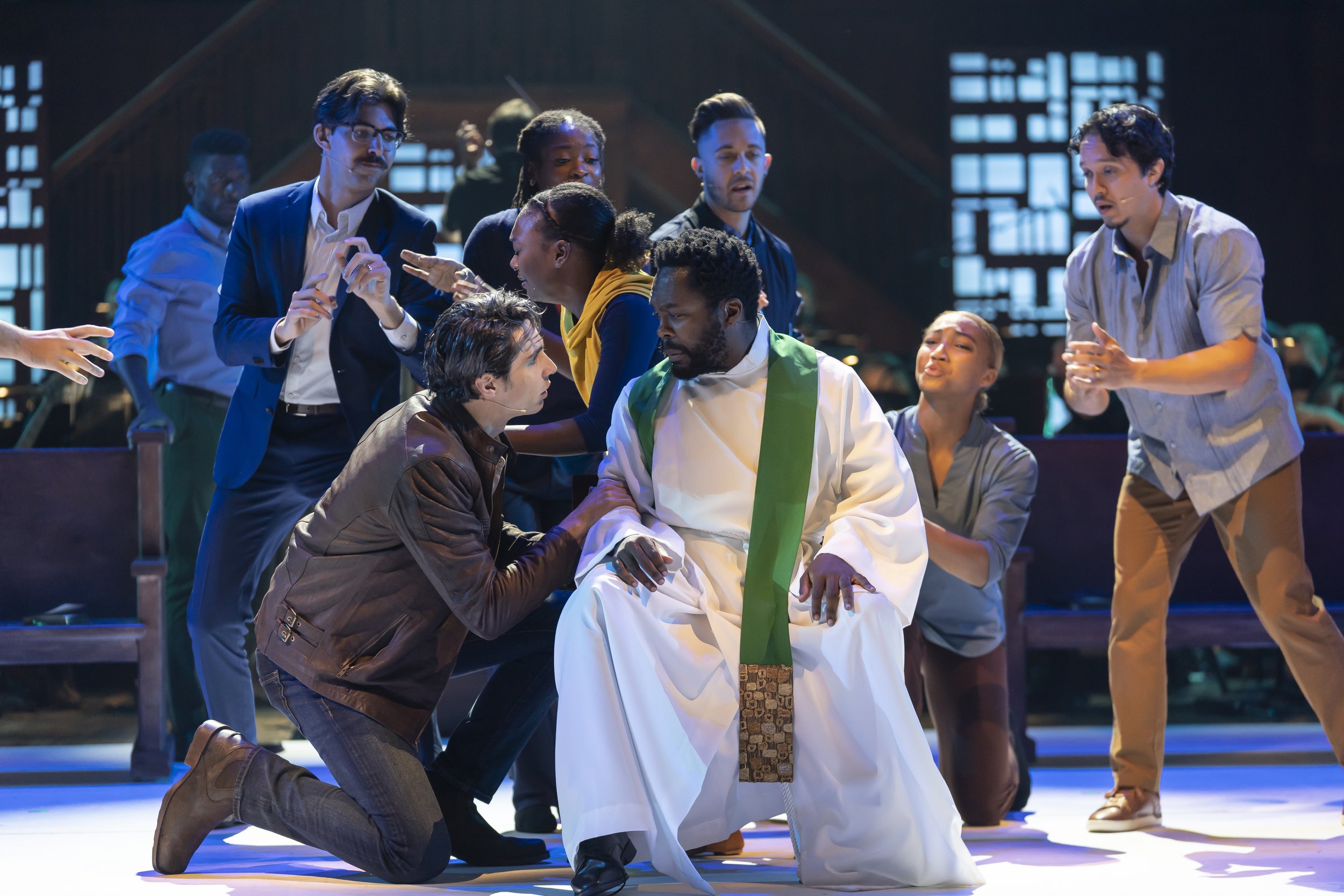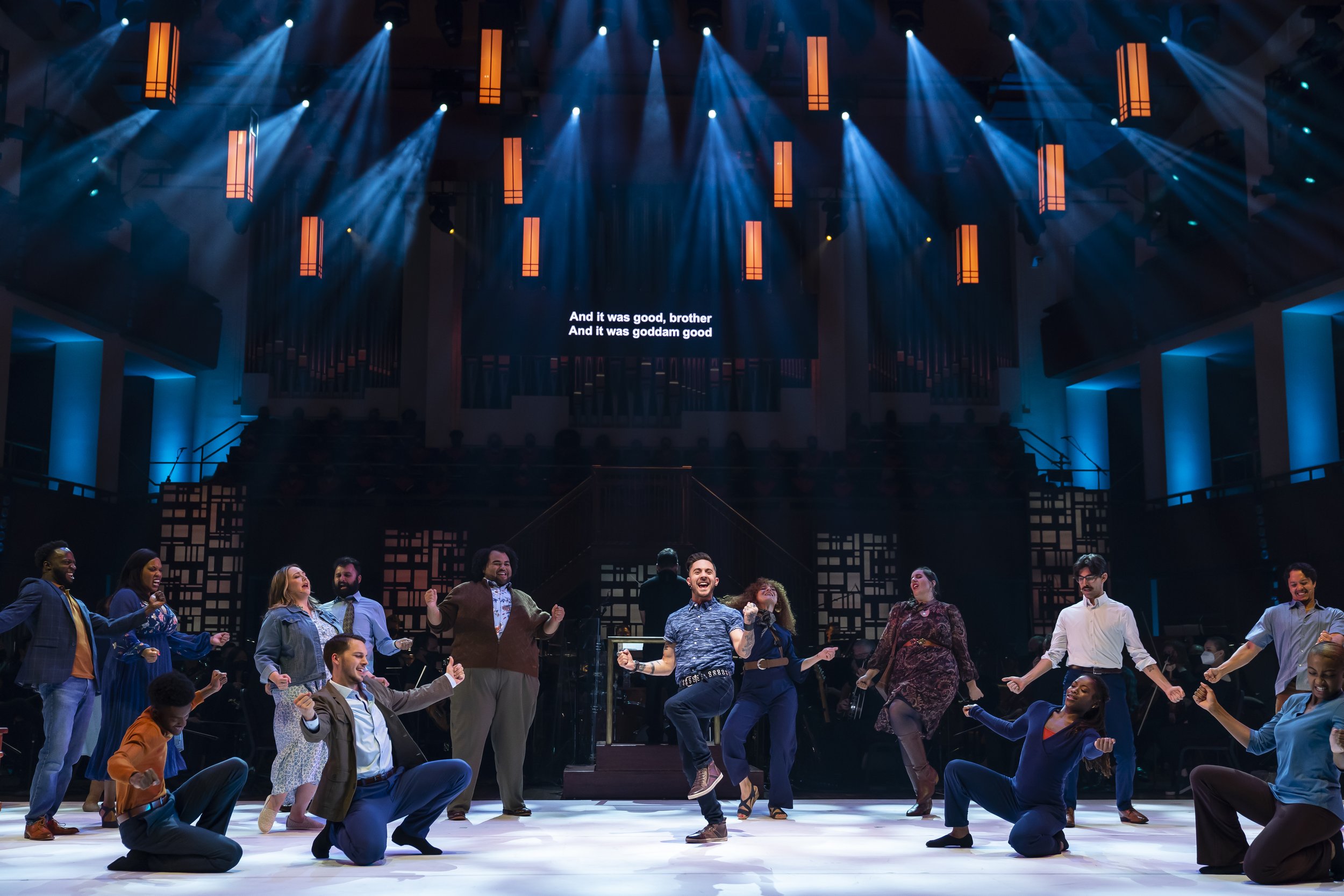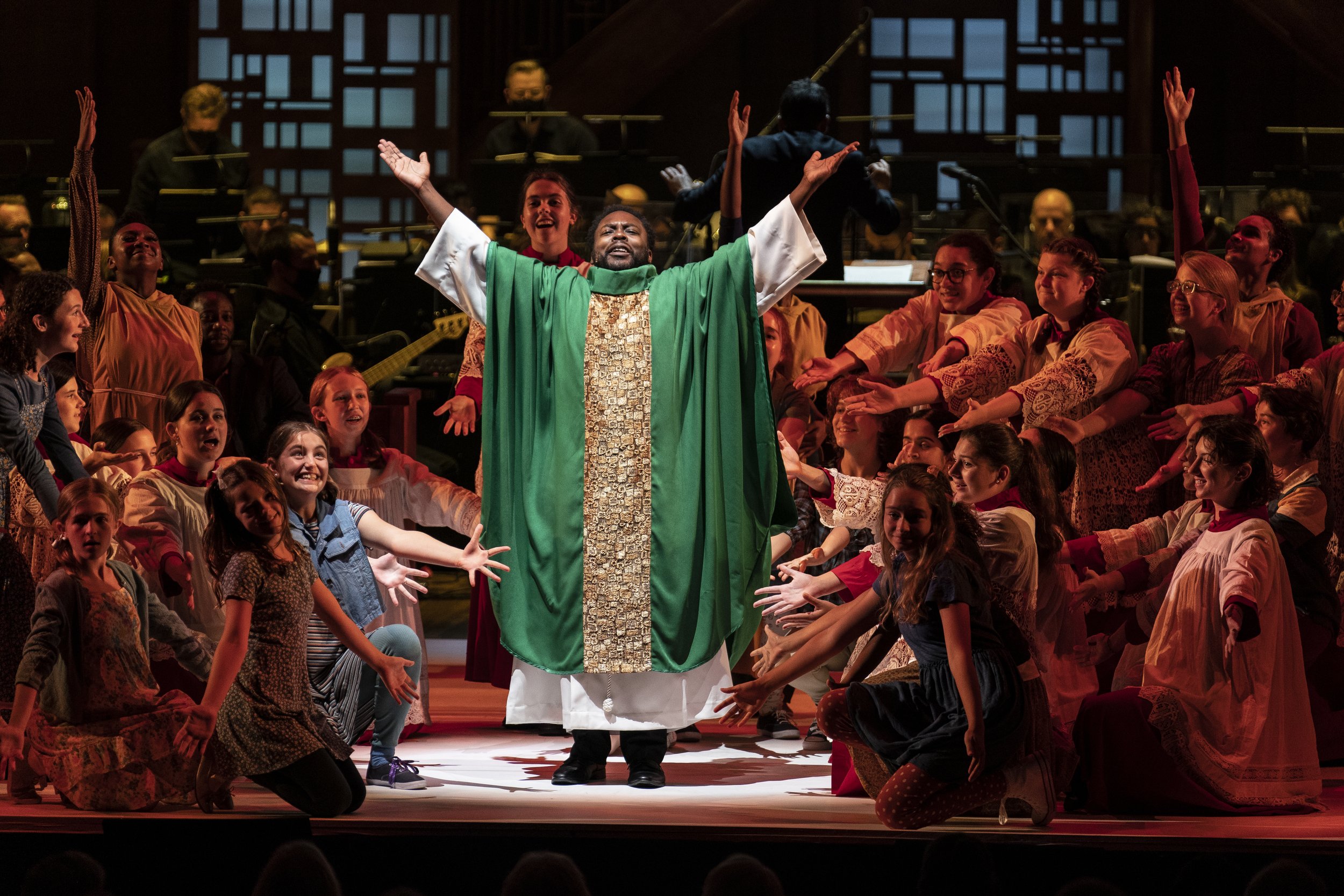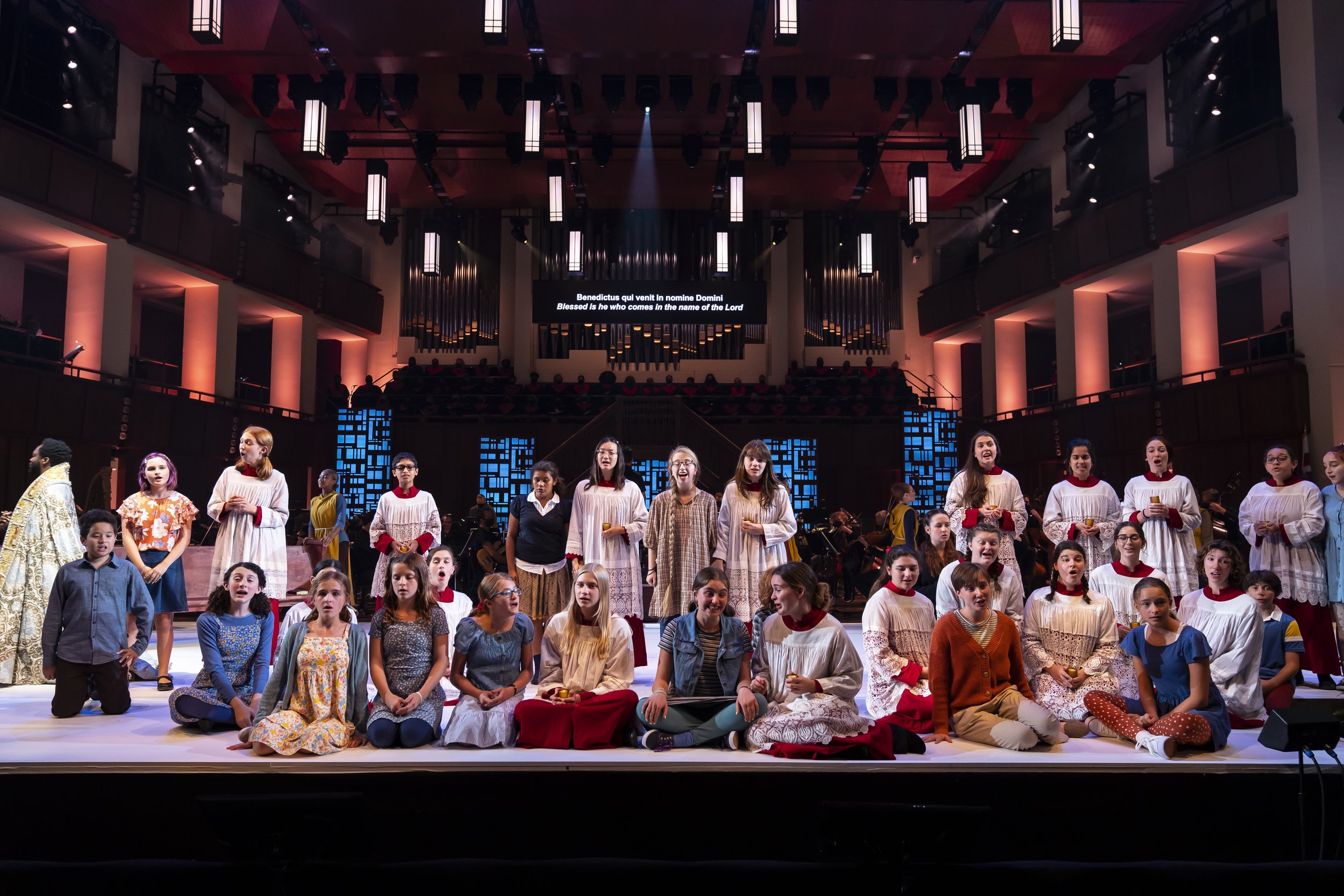Hooray! Opera Philadelphia’s fall opera festival is back and is expanded. They’ve added an Opera on Film section this year to Festival O22. OP’s innovative, annual opera festival was forced into hiatus by the pandemic for the last two years. The film portion runs the last six days of two weeks of staged performances, September 22 – October 2. Opera on Film seems a natural expansion given the existence now of its Opera Philadelphia Channel streaming service; the Channel was initiated as a creative response to the COVID shut down of live, in theater performances. The first of three film events involving short films took place on Wednesday evening, named “Like, Share, and Follow”, a mixture of seven, recent 5 to 20-minute films of varying degrees of operatic nature. Opera Philadelphia’s Frank Luzi and Sarah Williams working with a screening panel of film specialists received over 800 submissions of films to consider alongside ones from OP’s Channel. Mr. Luzi explained in opening comments that the title for the evening’s short films derived from the first two films: the first premiered on Instagram and the second was about social media’s effects; he joked that the rest were chosen because the panel thought they were really neat. After having spent many hours over the last couple of years viewing videos on the Channel, I was looking forward to this new part of the annual festival.
Here is Wednesday night’s line up with directors followed by producers listed after the titles; those titles highlighted have links to websites where the film can be viewed online as of this posting.
Among the Flowers (2021) – Patrick Eakin Young; the Royal Opera House
Corsair (2020) – George Cederquist; Chicago Fringe Opera
Someone Like Me (2018) – Adam Taylor; Obadiah Baker
The Two Hot Shots (2021) - George Moïse; A Lab Studios
A Jarful of Bees (2021) – Natalie Frank and Erin Pollock; Paola Prestini
Rumspringawakening (2019) - Adam Taylor; Obadiah Baker
Heroes of New York (Brian Gonzalez and Malena Dayen; Bare Opera
I offer a few comments about my initial reactions to each film seen once as part of a package of all seven, mainly intended to pique the reader’s interest in these and other filmed versions of opera.
Film still 1: A young man staring intently at his Facebook post in Someone Like Me. Film still 2: A painting from A Jarful of Bees. Images courtesy of Opera Philadelphia.
Among the Flowers is an “Instagram Opera” that confronts the viewer with a barrage of images, mostly flowers, some birds and hands and bleak scenery, with a poetic song by a woman whose life was once blest, and now using her phone, she revisits her memories. The film left this viewer experiencing melancholy and wanting to cling tightly to the here and now.
Corsair was a very slick production complete with gorgeous people who could have stepped out of a fashion magazine photographed in Chicago, said to be based on a story from the “Decameron” as a sailor journeys “from greed to humility”. The man is washed up on the shores of Lake Michigan and is a baritone and a hip-hop artist who is paired with an opera soprano. For me it was the mix of opera and hip hop that provided the greatest interest. I hope they explore more in this area.
Someone Like Me offers an interesting double entendre as young people search for people like themselves on the internet and hope that someone (in the thousands) will like their Facebook post. Who knew breakfast could cause so much depression or elation or mating possibilities? This film is both sheer fun and a caustic look at how social media exploits our vanity and self-doubts, controlling our lives in both obvious and insidious ways. Of course, you are immune to all that, right? Watch this film and profess it again, if you can. Be sure to like this blog post.
The Two Hot Shots is a delightful modern comedy adapted from Rossini’s Otello, one of O22’s stage productions. Two macho men waiting in a hospital room for their COVID shots have a verbal battle with each other over who will man up and go through with getting their arm punctured, while at the same time extolling the virtues of getting the shot. The filmmaker found a clever way to encourage people to get vaccinated, while giving us an amusing opportunity to hear a little Rossini sung in a modern setting, perhaps a shade darker than if the rivals had been Bugs Bunny and Elmer Fudd. Why didn’t Warner Bros. think of that?
A Jarful of Bees begins with a painting of a woman who is singing. As she sings, the patches of color appear on her face in motion, distorting her face. While this film was highly colorful and artsy, I would have needed subtitles to follow the words and was baffled as to its intent, though viewed simply as visual art with shifting paintings and Claymation figures, it generated interest. OP’s program notes state, “A multimedia, immersive short film on the transformation of memory and the mutability of familial relationships.” I’d like to say more, especially since the libretto is by Royce Vavrek and is sung by mezzo-soprano Eve Gigliotti, but I’d have to see it again.
Film Still 1: The young couple experiencing New York City together in Rumspringawakening. Film still 2: A neighborhood shop owner in Heroes of New York. Images courtesy of Opera Philadelphia.
Rumspringawakening is a funny and heart-warming coming of age tale of a young Amish man, who is allowed to sin for a day in New York City and then decide if he wants to rejoin the Amish community. His spouting of obscenities for the first time is amusing the same way it is when a child uses a “bad” word, and quite a few “bad” words are said. It manages to exalt most of the arts while the young man and his newfound female more-than-a-friend roam around Times Square and Central Park. The scene near the end with the young man and his girlfriend had a special charm. It could only have been improved by having Fred Astaire and Ginger Rogers in the roles with some top-notch dancing thrown in.
Heroes of New York was my favorite film of the evening, so last but not least. It tells the tale of five New Yorkers that play important roles for the city but go about their business without public recognition, if appreciated at all – a young immigrant physician, an environmental activist, a store shop owner, a specialist in love for sale, and an aspiring singer. The film presents their trials and reveals their importance to the fabric of the city. As the young physician emphasized repeatedly, we have to take care of each other - her mother taught her that. Whether new opera or old opera, love and connection are winning themes.
The films, as a group, are a mixture of concepts in storytelling, some straightforward in telling their story and others less well defined, requiring more of the viewer. A wide variety of musical styles are employed, most original with some borrowed, typically orchestrated effectively with relatively few instruments. The films were presented one after the other without a break. The overall impact for me was like circulating at a dinner party where each guest you talked to had an interesting story to tell or perspective to reveal…well, if each guest was a highly talented performing artist.
Much is made about what is proper subject matter for an opera; an opera is supposed to focus on grand passions and the extremes of human behavior. However, a major attraction for these operatic works for me is how fresh they feel. They are about people struggling with the problems and pressures of life today, my tribe. And being films, they provide directors new artistic opportunities for creative expression not possible on the stage. Shifts in location or time, no problem. Watching a character’s face melting, no problem. None of these films could have been presented in the same way, if at all, in staged performances. I hope we see this area grow alongside staged opera;. In fact, these films were really neat and often affecting.
The Fan Experience: The Opera on Film section of Opera Philadelphia’s Festival O22 runs September 27 to October 2 at the Philadelphia Film Center in Center City. Matinee and evening showing times were utilized, but each film was only shown once. The schedule can be found at this link. COVID vaccinations and masking are no longer required, but are strongly recommended; some people were masked and some were not.
I liked the Philadelphia Film Center, and it was a short walk from the downtown hotel where my wife and I stayed, close to all the venues for Festival O22. Admittedly, it would have been more challenging coming from the suburbs for a 6 pm start, dealing with rush hour traffic and parking. On the other hand, restaurants downtown are a treat; we enjoyed the pizza from Alice’s once more; love that crust and the many, many pizzas available.



